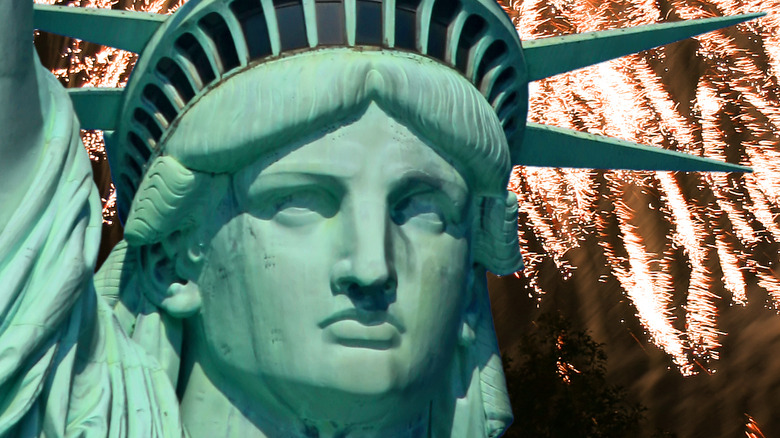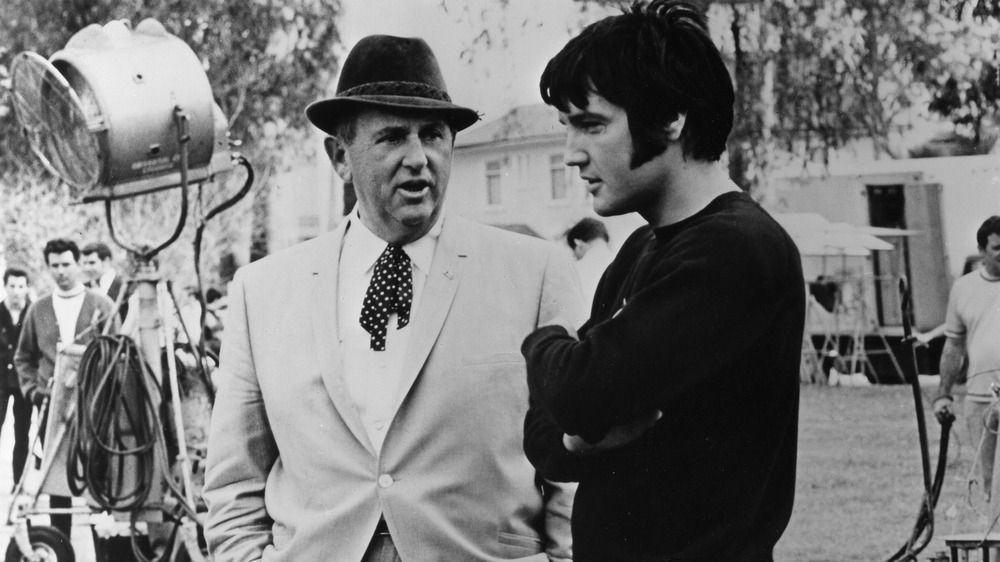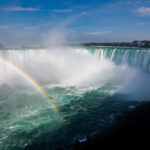
You’ll Never Believe What Researchers Discovered When They Drained the Water from The Niagara Falls
In the summer of 1969, a lot of things were going on; like war protests and Woodstock, to name a few. But maybe you don’t remember something else that happened in June of that year, and it was pretty huge, both historically and environmentally.
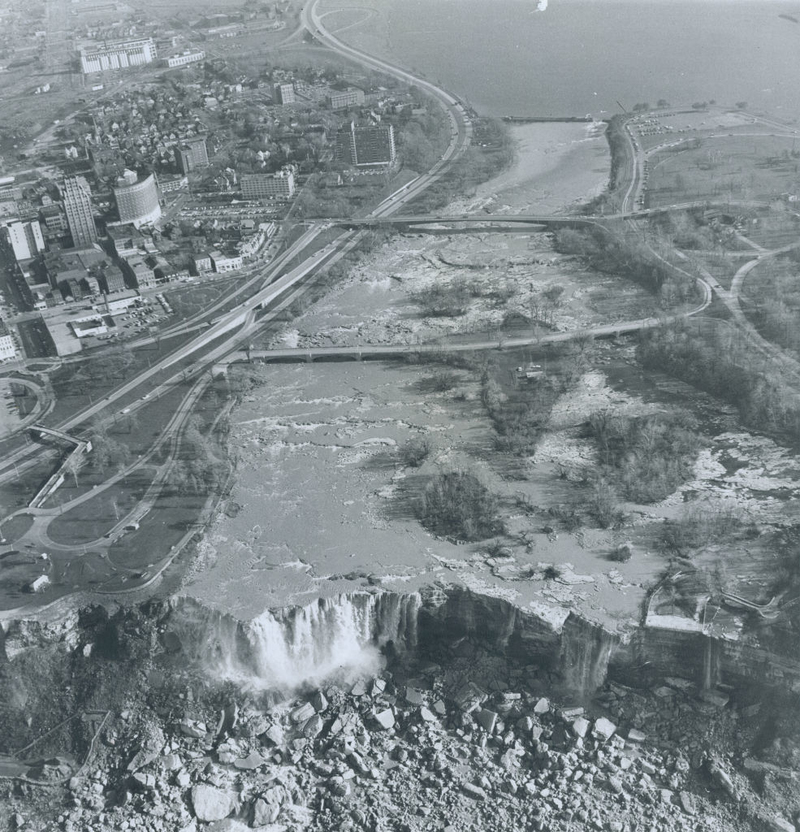
That’s because in June of 69’, a team of researchers turned the water off at Niagara’s American Falls. It may sound seemingly impossible, and it was certainly no easy task. But why turn the water off in the first place? And what did they find lurking beneath when they did?
People flock to Niagara from all over the world to get a glimpse at the powerful rushing water. Or better yet, to take one of the famous boat tours that takes visitors up close and personal. Over 12.5 million people came to visit the falls in 2017 alone.

But in 69’, questions were being raised about something strange happening underneath all of that water, and researchers wanted answers. The solution they came up with was astonishing: they would shut down the falls.
Hundreds gathered to witness the roaring of water come to a halt. The tens of thousands of gallons that poured from the falls every second just stopped. But it wasn’t so much the fact that there was no water that surprised spectators.
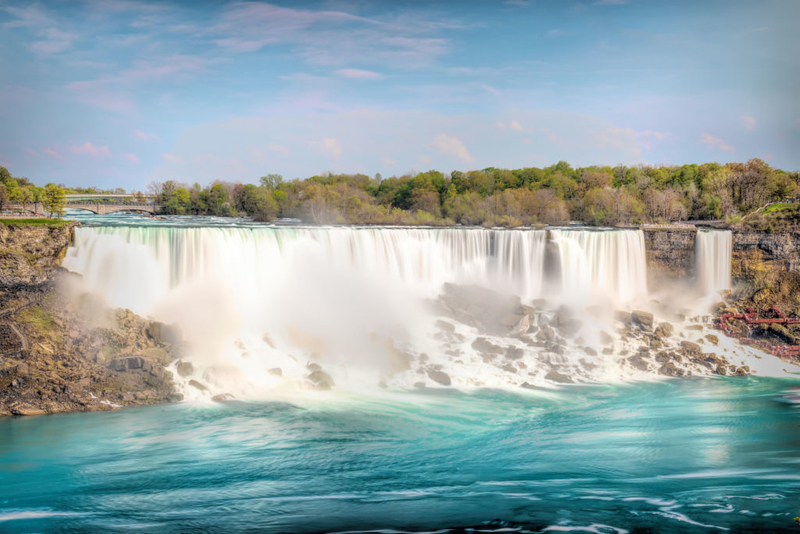
Although it was an incredible sight to see in itself, it was more about what they saw underneath that really shocked them. Bystanders couldn’t wait to set their eyes upon the dry and quiet area, something that they’d probably never get to see again.
The Niagara Falls may seem old to us, but as far as geology is concerned, they’re actually young – 12,000 years young, to be exact. They were formed at the end of the last ice age, when all of the melting ice started to drain into what is today known as The Niagara River.

The base was formed naturally, and still continues to form to this day, although man has definitely left his mark on the falls. Once it was discovered it was possible to harness the hydroelectric power, that was the end of its natural state of being.
Although scientists have been able to determine the age of the falls, there is no way for them to know for certain who the first people were to lay eyes on it. It is widely speculated that there likely would have been Native Americans living in the vicinity at some point early on to have witnessed their glory.

Even so, no one is completely sure who made the initial discovery. Although the first time a documented discovery was made is another story.
The Native Americans were no doubt the first to catch a glimpse of the beauty of the falls. But it wasn’t until 1632 that French explorer Samuel de Champlain would document the area.
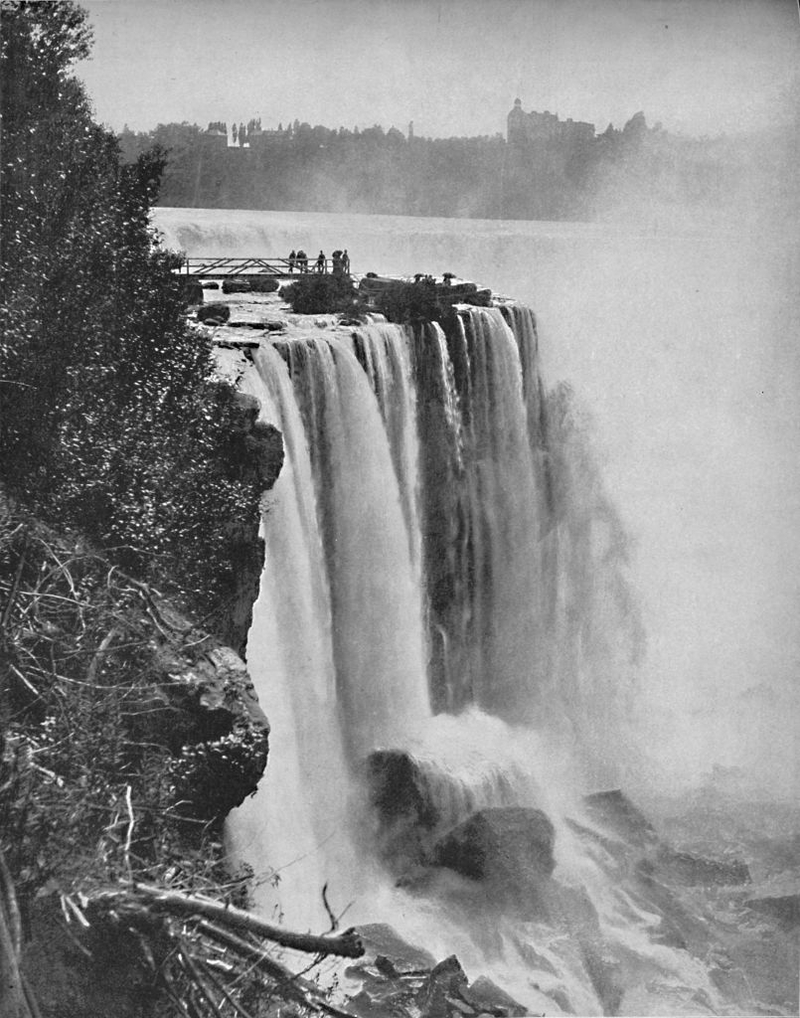
He first wrote about the falls on a map of his travels of what was at that point called New France. At the time the original map was drawn, the base of the river was nearly seven miles further back than it is today.
Several decades after Champlain’s map was created, a missionary named Father Louis Hennepin would create the first printed description of the falls. In 1683, he published a book that was originally comprised as his journal.
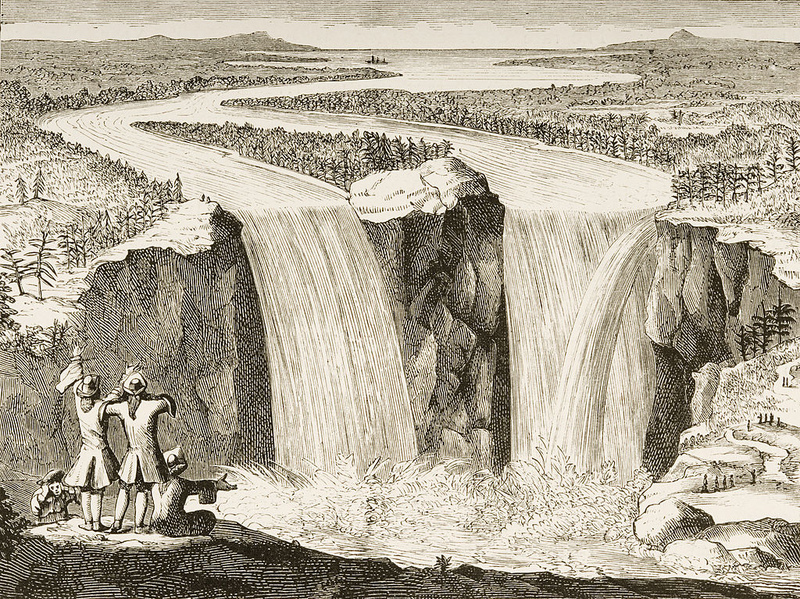
In it, excerpts of what he had seen at the falls read along the lines of, “Betwixt the Lake Ontario and Erie,” he continued, “is a vast and prodigious Cadence of Water which falls down after a surprising and astonishing manner, insomuch that the Universe does not afford its Parallel.”
In the late 19th century, Niagara was known as the Honeymoon Capital of the World. After more and more publications were released about the wondrous sight, more people became interested in seeing it for themselves. And once the Erie Canal was completed in 1825, it was easily accessible to tourists, which caused an even larger influx in travel to Niagara.
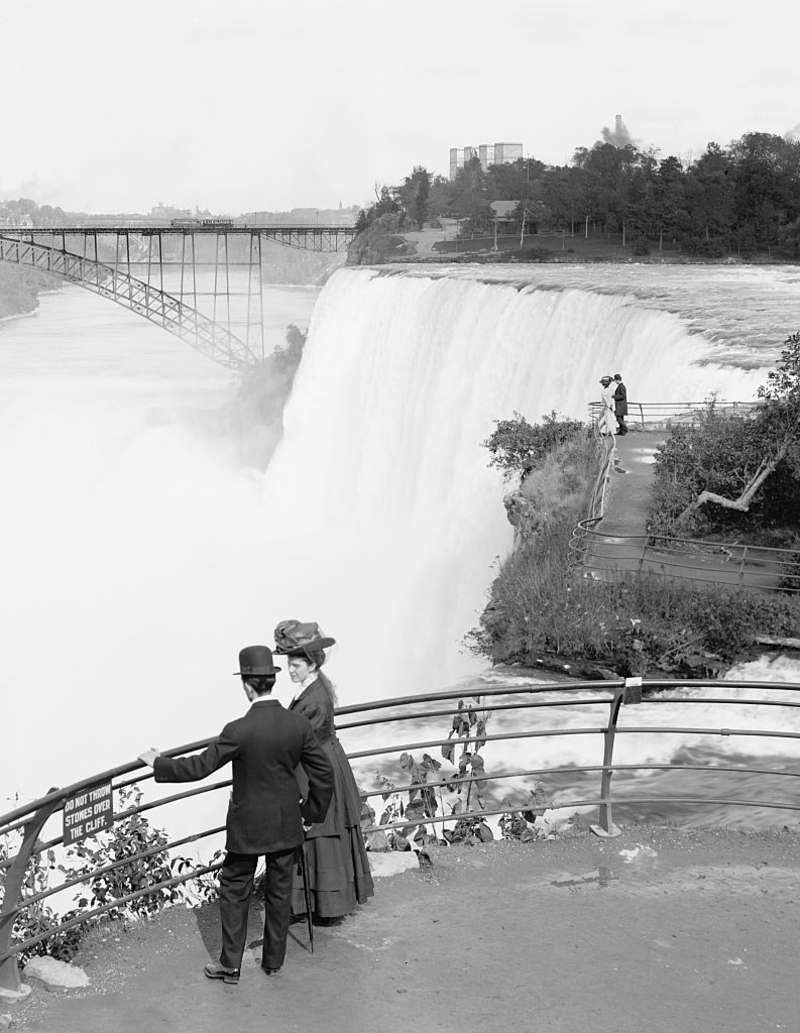
But it wasn’t just young couples eager to wed by the falls that were attracted to the area.
Entrepreneurs of all sorts flocked to Niagara, ready to open hotels and restaurants and cater to all of the newlyweds and other tourists. But another group of individuals soon had their eye on the area: industrialists that realized there was something about the falls themselves that they could harness for power and finance.

Once they made the connection that this incredible hydroelectric power source could provide the electricity, they needed to power their factories – and that’s just what they did.
In 1895, the world’s first major hydro-electric plant was opened: the Niagara Falls Power Company. The plant was built by some of the most brilliant minds in history; including Nikola Tesla and George Westinghouse. One of three original buildings, known as Adam’s Station, or Power House #3, still stands to this day.

But when the ball started rolling, so to speak, things didn’t turn out the way they had hoped. Luckily, between the two scientists, they were able to work out the kinks and power up the world, so to speak.
Tesla and Westinghouse both had a knowledge of alternating currents going into this work, and when they paired up, they were able to determine how to reroute power all the way from the falls to New York. Tesla’s invention of the alternating current induction motor would prove to be one of the greatest in history – and one that is still used today.

Using Tesla’s technology, the falls is one of the world’s best and biggest sources of hydroelectricity. These days, the falls are able to generate nearly 5 million kilowatts, which is enough to power up over 3.5 million homes.
As you can imagine, it takes an incredible amount of water to produce so many million kilowatts of electricity. Over 3,150 tons of water falls every second – that’s nearly 800,000 gallons – in 60 seconds alone!
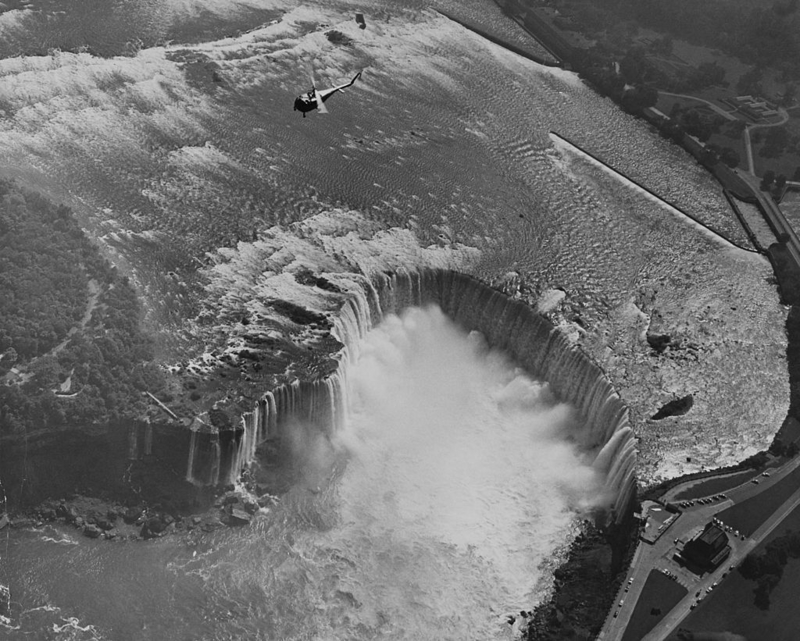
The falls, which is split across Canada and the United States, plays host to nearly 30 million visitors every year. Those numbers continue to rise as more time passes.
In 1950, the Niagara River Water Diversion Treaty was signed into effect to help “enhance the scenic beauty” of the falls, while providing everyone the benefits of using the water. Part of this treaty includes restrictions on the amount of outflow at certain times of the day (and night).
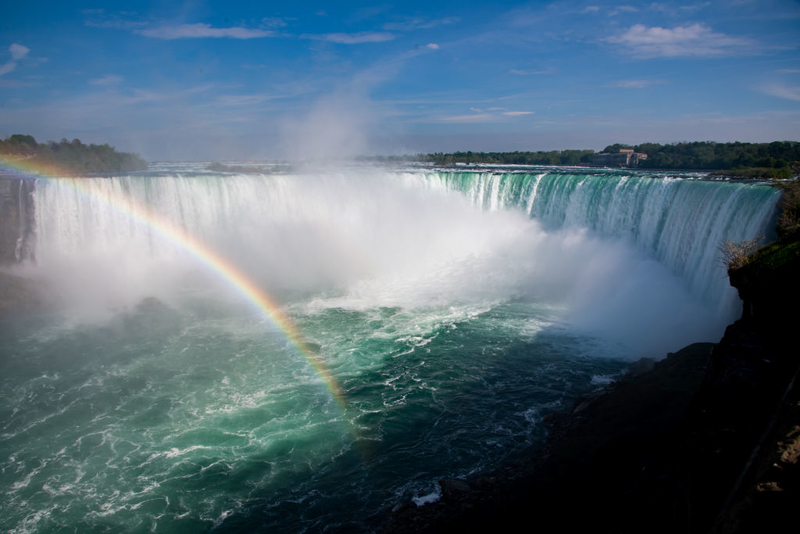
Aside from time of day, time of year also plays a role in how much water escapes the falls each second. That’s because things tend to run differently between November and March, when the outflow is cut in half.
Until the mid 1960’s, ice could block the flow of the water petty far up the river. Usually, however, everything continues as usual. Or at least, the falls continue to produce at least 50,000 gallons per second. But on some occasions, like the 2014-2015 polar vortex, the falls freeze up completely. Take a look at the picture below, that has begun circulating the internet and is referred to as the “frozen falls”.
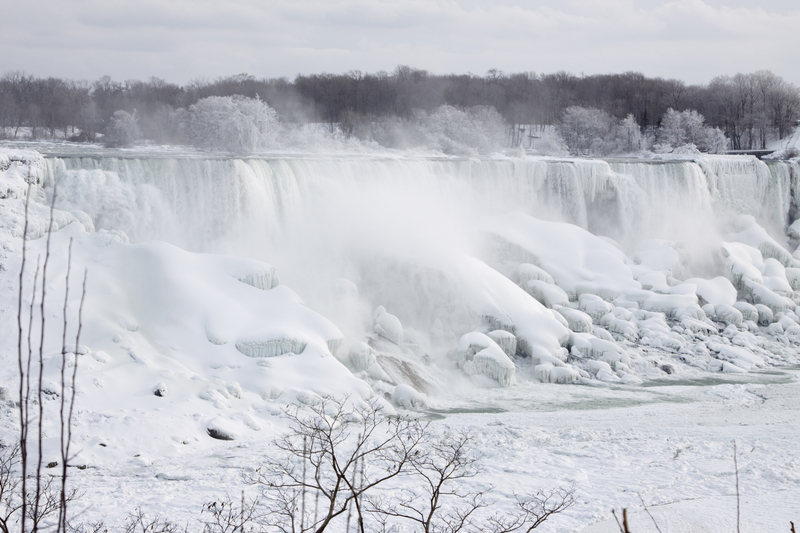
Visiting Niagara around this time of year has proven to be dangerous. Certain safety precautions have been instilled since three visitors lost their lives to falling ice in the area.
People who live in the area are accustomed to the sound of the rushing waters – and they have been since there were people living in the area. So, you can imagine how if that sound were to suddenly come to a halt, residents may be a little shocked. That’s exactly what happened when, for the first time in 1848, the Niagara Falls stopped, well, falling.

For 30 hours, on March 29th, millions of tons of ice blocked the flow from Lake Erie. And, just as Mother Nature had caused the dam, she took it away with some strong gusts of winds just over a full day later.
After the 30-hour debacle in March of 1848, engineers knew they had to spring into action to prevent anything like that from happening again. Now, to stop ice from blocking the flow, yearly precautions are taken. A three-kilometer ice boom is installed where the mouth of The Niagara River meets Lake Erie.
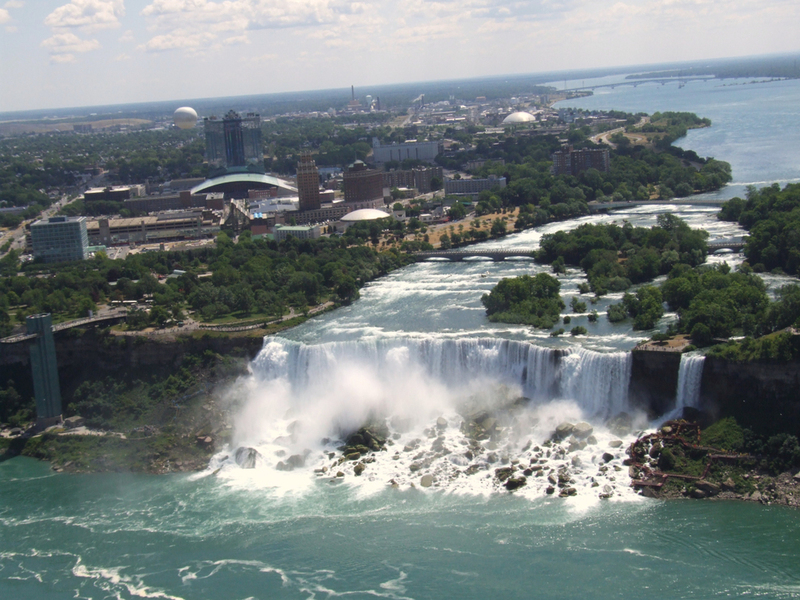
22 steel pontoons work together to control the amount of ice that makes it into the river. But 1848 wouldn’t be the last time the water would stop falling. Only the next time, it was man who made it happen.
Debris at the base of The American Falls was starting to concern everyone. So, in 1969, the U.S Army decided to intervene. The Army Corp of Engineers started studying what measures they could take, if any, to remove the blockage.
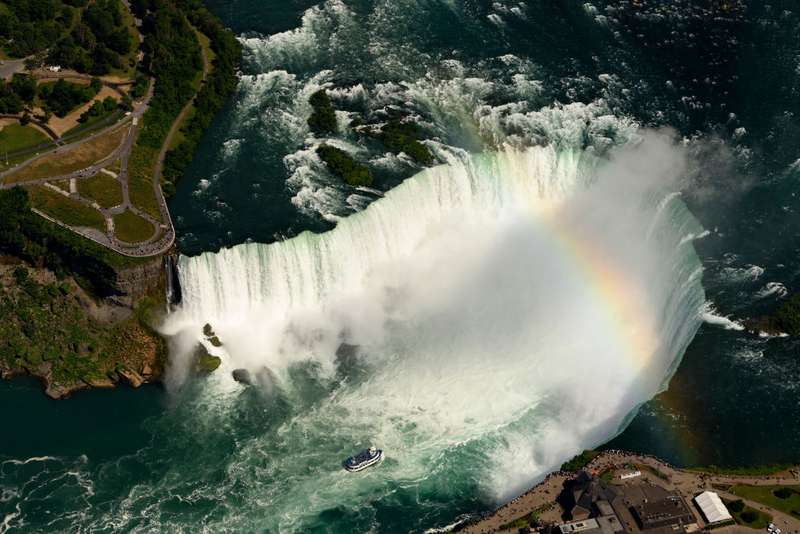
But before anything could be done, the International Joint Commission had to be consulted. After all, this wasn’t just the U.S involved, since the falls are in Canada, as well.
The Horseshoe Falls on the Canadian side of Niagara was the first one to be sculpted to give it a better appearance, at the request of citizens and those who oversaw everything. In the late 1950’s, cofferdams had been erected to dry out the area so everything could be chiseled and contoured.
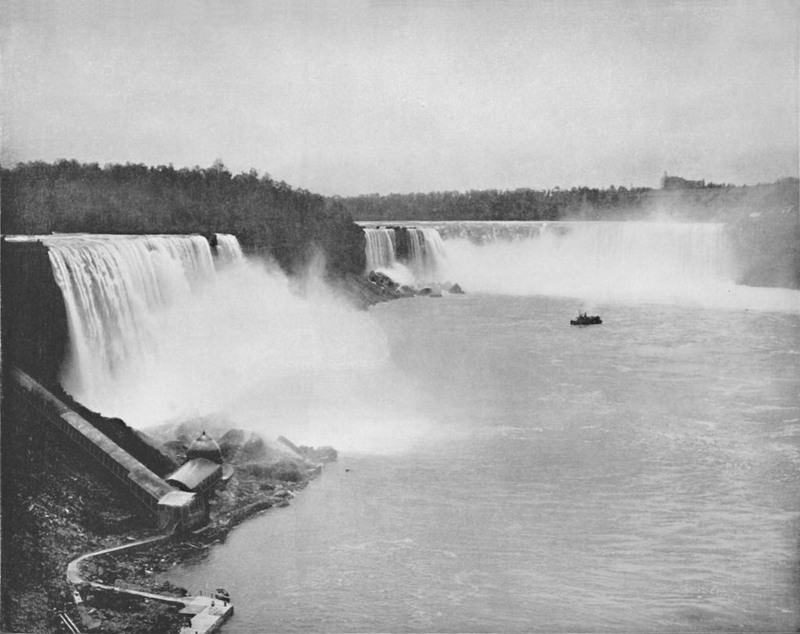
This resulted in the Horseshoe Falls area being the most desirable viewing spot in all of Niagara. And because of that, the citizens of Niagara Falls, New York, decided that it was time their side get a makeover, too. And thus, they began the 1969 American Falls projects.
To find out exactly what it was that was causing the issues, researchers tried to figure out how they would restore the falls to their natural beauty. The solution? The American Falls were completely shut off from June to December of 69’. There were about 27,000 tons of rock dumped upstream, which created a cofferdam that ran from the mainland all the way to Goat Island.
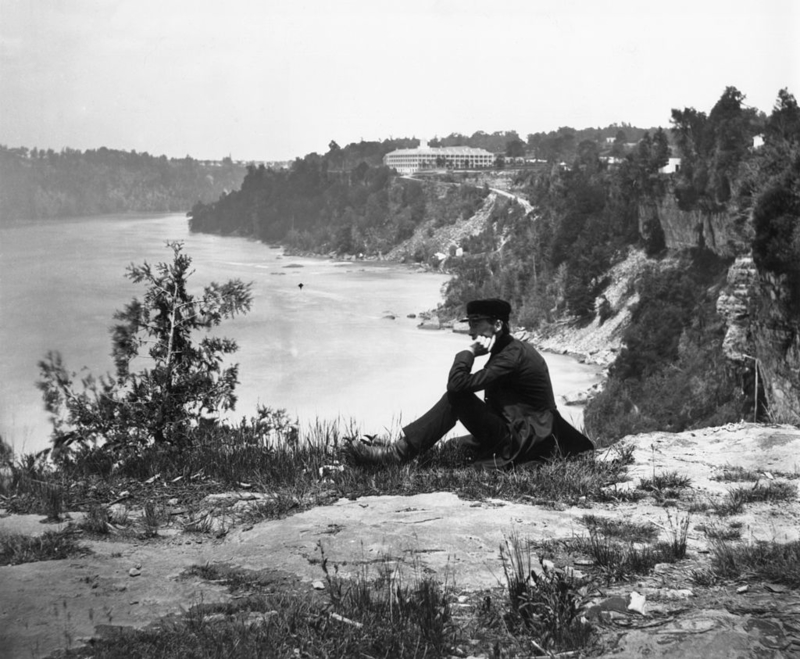
Once the rock bed was exposed, researchers could begin looking underneath it all. And when they did – they found some things that shocked them.
No one knew exactly what they were going to find when they looked in the underbelly of the Niagara Falls. But one thing is for sure – no one could have expected to find what they saw when that water finally stopped rushing. The image was one that shocked Americans and Canadians alike – and they knew that something had to be done.

Among some of the things they found in all of that rock debris: coins that humans had tossed into the falls – and some darker discoveries.
As eager as everyone was to get the ball rolling on the project, there were also doubts crossing the minds of locals. They knew that it had to be done, but they were worried that without the main area attraction – the 100+ thousand gallons of rushing water – that the economy would take a nosedive.
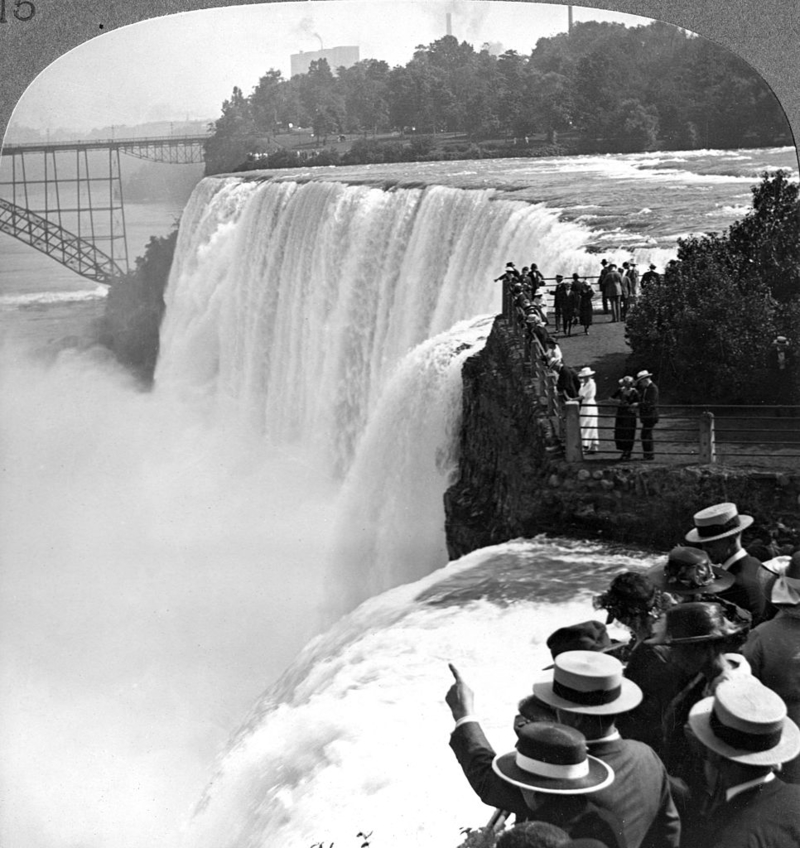
But still, they decided to go ahead with the plan. After all, even if the local economy suffered temporarily during the process, it would all be worth it in the end. Not only would this project improve the aesthetics; it would also help protect and preserve the falls.
When the water stopped, an odd thing happened that no one was expecting. Sure, the visitor numbers initially slumped, but once everyone realized what they were missing out on, they picked right back up.
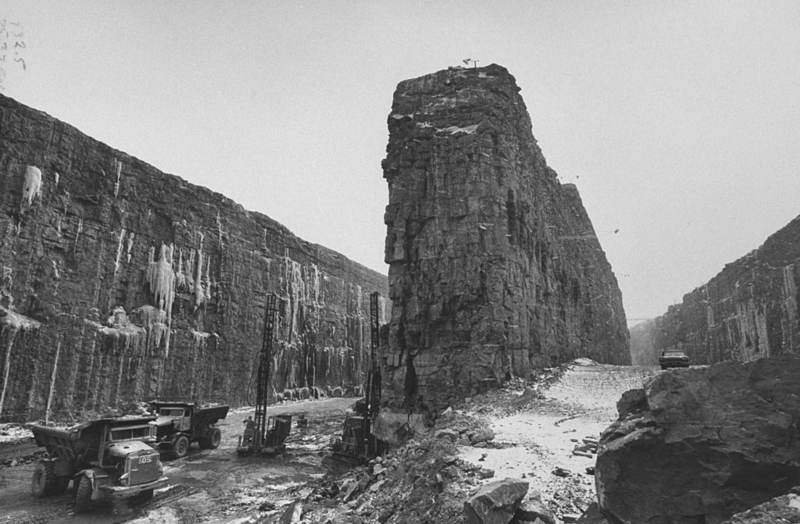
People were interested in seeing what the falls looked like sans water, so tourism numbers never dropped that dramatically. Plus, everything was set to be wrapped up in just a few months, so the concerns faded away fast.
Aside from the coins that were discovered among the rubble, researchers also came across something grimmer: a couple of human bodies strewn throughout the rock piles. Among them were the remains of one young man, who they believed to have perished from suicide after jumping over the falls to his death. They also discovered the body of a young woman, who most likely died in the same fashion.

After all, unfortunately, these types of things are all too common at The Niagara Falls.
Those unfortunate deaths were just two of many that happen around there each year. As beautiful as an area as Niagara Falls is, it attracts quite a few visitors looking to end their lives, just as it attracts those simply looking to witness its beauty. There are an estimated 40 deaths or so to occur at the falls every year. And, out of those 40, more than half of them are deemed to be suicides.
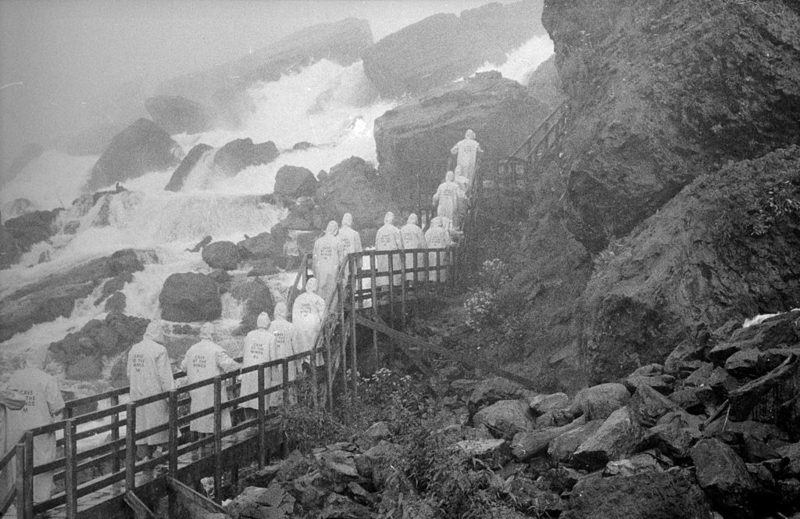
Just earlier this year, witnesses at the falls reported a man who climbed over the ledge, “in crisis,” jumped, and vanished into a watery grave – or did he? As it turns out, bystanders found him sitting on the rocks below not long after.
But not all of the people to topple over the falls are doing so to end their lives. Although, everyone to do it is quite aware of that being a risk. Though some of the people to go over are trained, professional stunt people, who jump in a barrel and ride the falls like some sort of water park coaster.
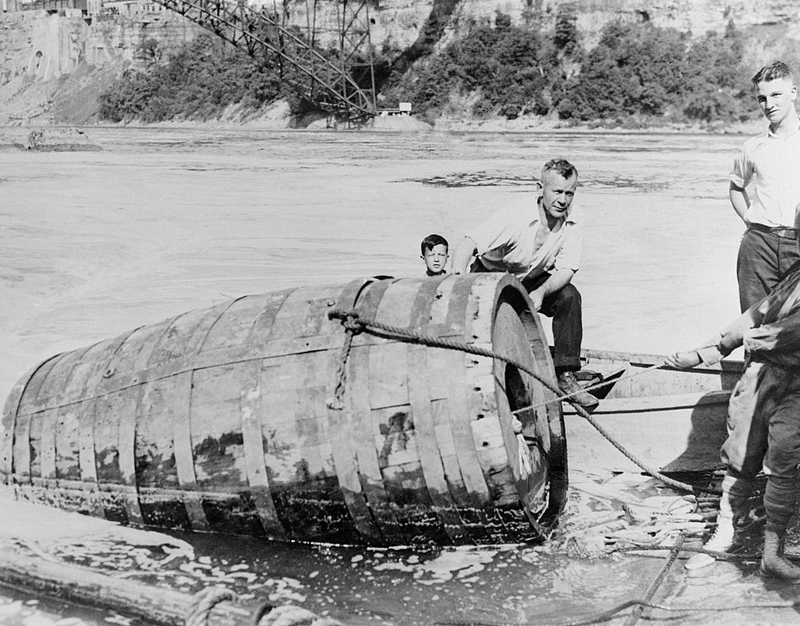
It may sound insane, but there have actually been quite a few people to attempt the barrel rides.
In 1901, 63-year old Annie Taylor was the first person so survive the barrel ride over the falls. Riding in an airtight wooden barrel with air compressed to 30 psi, she toppled over the edge and emerged with just a few bruises and bumps. Taylor expected her stunt to bring her fame and fortune – and, while it may have brought her some fame, she never saw the fortune she expected.
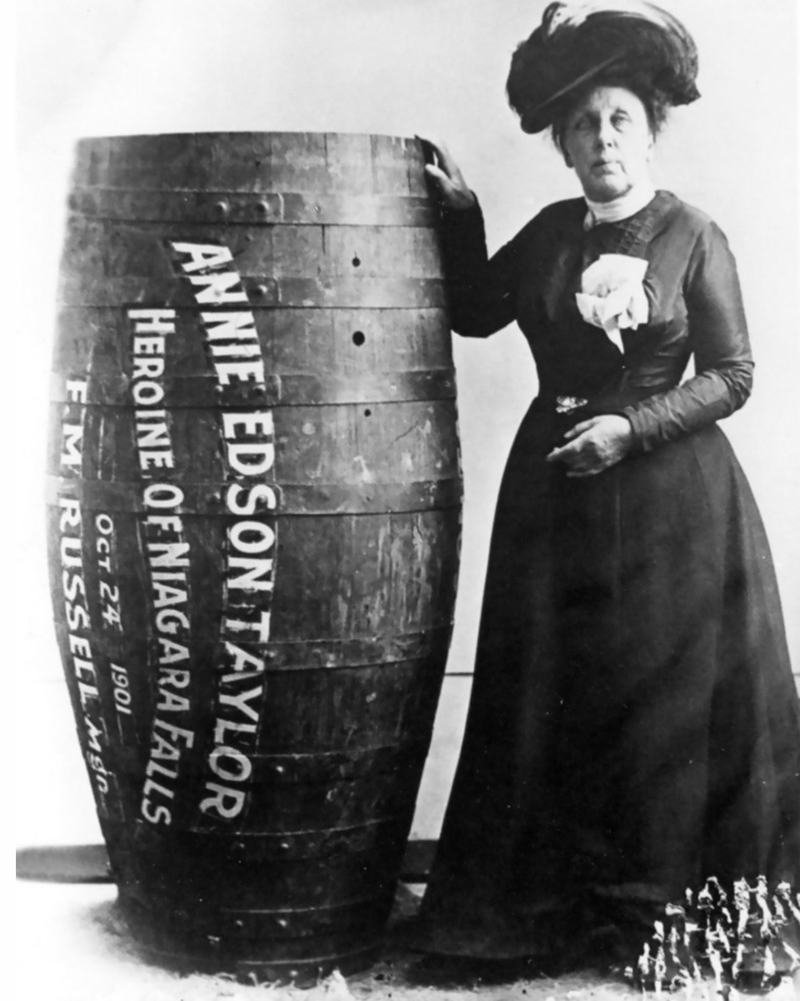
Annie passed away in poverty, but not before warning others that, “no one ought ever to do that again.” But did they listen? Of course not.
The second person to attempt the barrel stunt at Niagara Falls was Bobby Leach, 10 years after Annie Taylor’s run. Unfortunately, he wound up busting out both of his kneecaps during the trip over. He did survive, however, only to slip on an orange peel and die of gangrene a few years later.
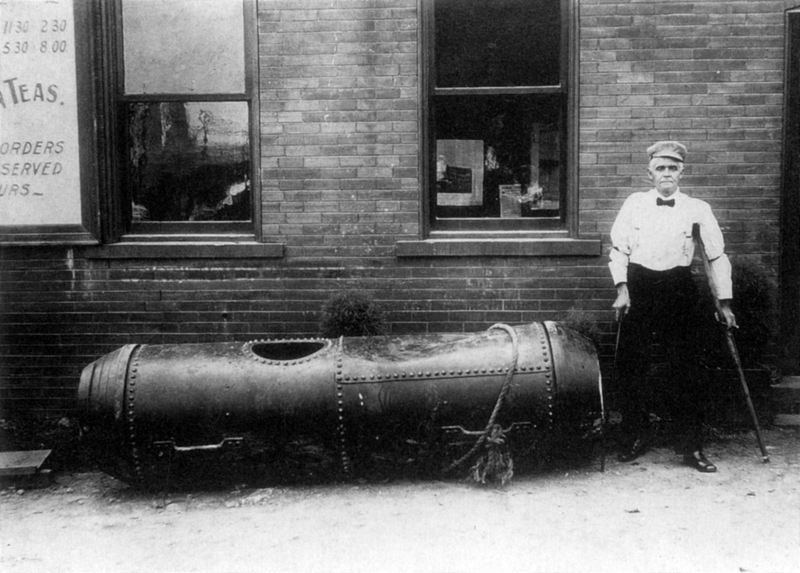
The attempts continued sporadically over the decades, right into the 1980’s, when Karel Soucek survived the stunt. However, he tried to recreate it a few years later during a thrill show at the Houston Astrodome, when the barrel missed the water tank and killed him upon impact.
And, with what we know about what happened to the unfortunate souls like Soucek, and others who didn’t survive the plunge, there are others still that completely vanished without a trace. Even in more recent years, when search and safety measures have improved, there are still circumstances in which these people disappear.
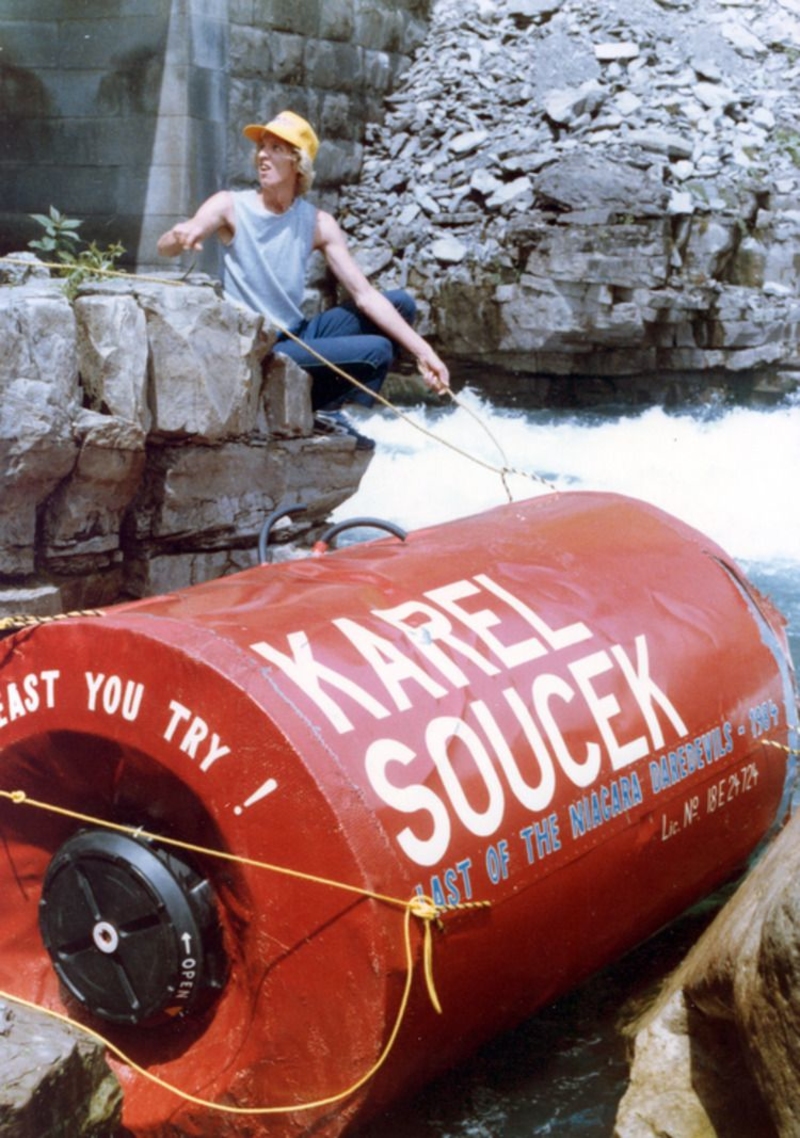
Take for instance 1990, when a stuntman from the U.S took on the falls in nothing but a red kayak – which coincidentally, was the only thing that they found after his run. The man was never heard from again.
The disappearances and lost lives in and around the Niagara Falls only continue to show us what Mother Nature is capable of. And yet even still, with all of the warning signs there, humans continued in their attempts to manipulate its natural power and beauty for the advancement of society (and financial gain).
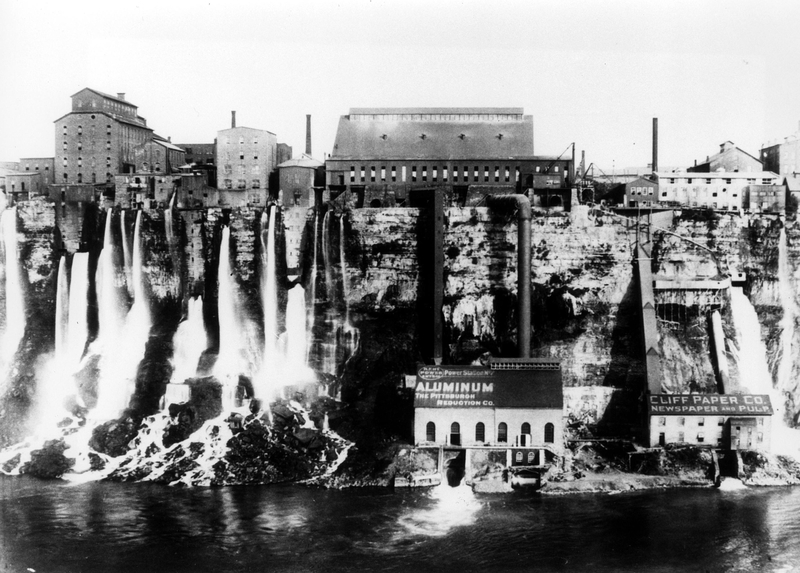
But nothing was shaping out to be as easy as those in charge initially expected. The more they wanted this “makeover,” the more resistance they were met with.
As authorities progressed with the plans for the American Falls, more questions started being raised as to how effective this entire method was even going to be. Some were worried about the differences in how much water would actually be coming over the falls.
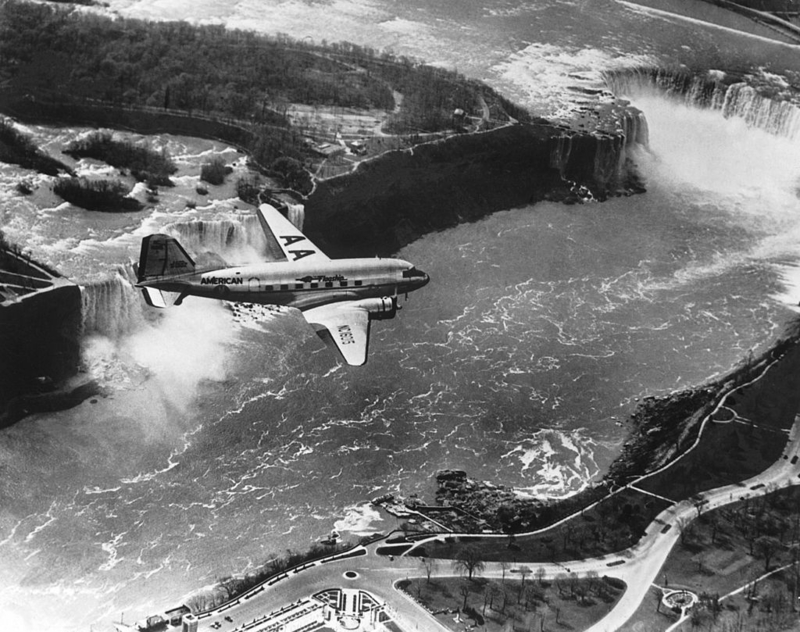
After all, the plans were to make it look “more voluminous,” but at the same time, the gallons per second would be greatly reduced. Since this was the first time in history anything like this was being done (to this extent, anyways,) it was very much a learning curb for everyone involved.
Even as they solidified all of the how’s and why’s behind the scenes, there was still one major monument for workers to climb. Somehow, they had to make all of these extreme changes by working in one of the most dangerous areas possible. This wasn’t just any other day at the office, it was a near 200-ft face of rock.
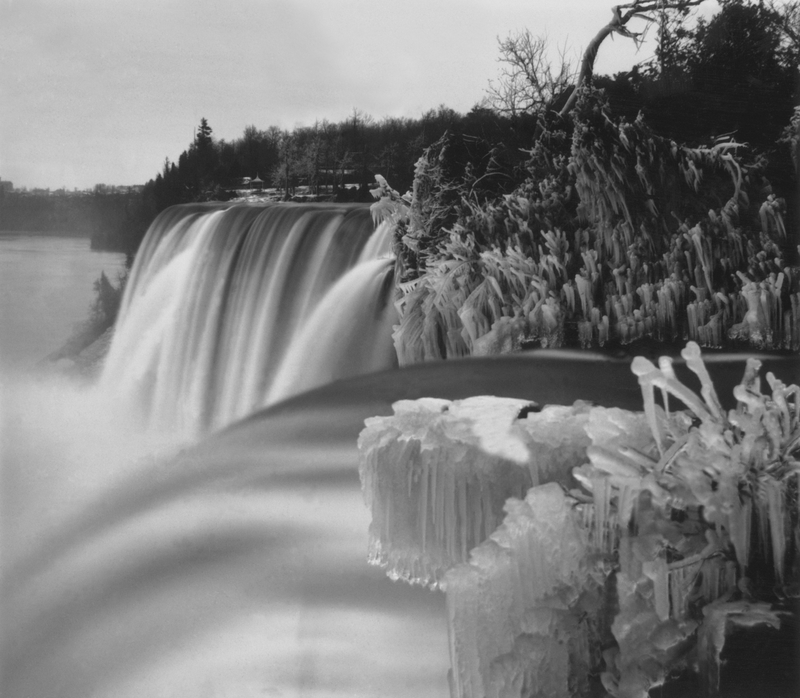
This wouldn’t be an easy feat by any means, and you can imagine the stress that engineers were feeling. Eventually, however, they would find their footing (literally,) and jump start the project.
All of these efforts weren’t simply taking place to improve the way everything appeared on both sides of the falls. In fact, the main reasoning behind the project, especially according to the International Joint Commission, was to protect the falls, and the citizens surrounding them, from some possible future catastrophe.
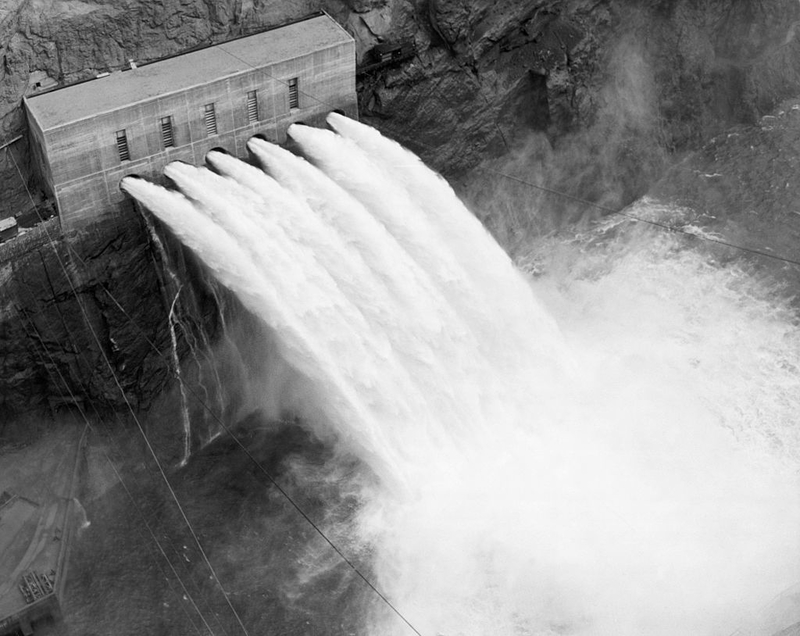
Officials were concerned that erosion had made the rock wall destabilized, which could definitely cause some issues if left without resolution.
In November of 69’, they had to remove the cofferdams that they had put in not long ago. Engineers decided it was time to let the American Falls flow once again.
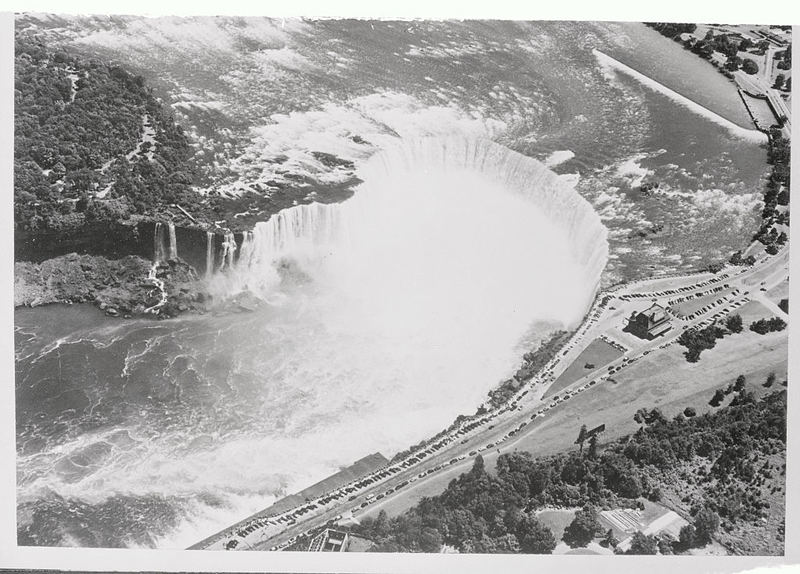
But the return to normal wouldn’t last for very long, since they would soon find themselves in another position that called for drying out the river once again. Locals bit their fingernails in anticipation as they wondered what would turn up beneath the waters this time.
Niagara Falls was an extremely popular area, not only for tourists, but for all of the hoteliers, and industrialists who wanted to wield the hydroelectric power for their businesses. And by the middle of the 1830’s, most of the land in the American area of the falls had been bought by private owners and fenced off.
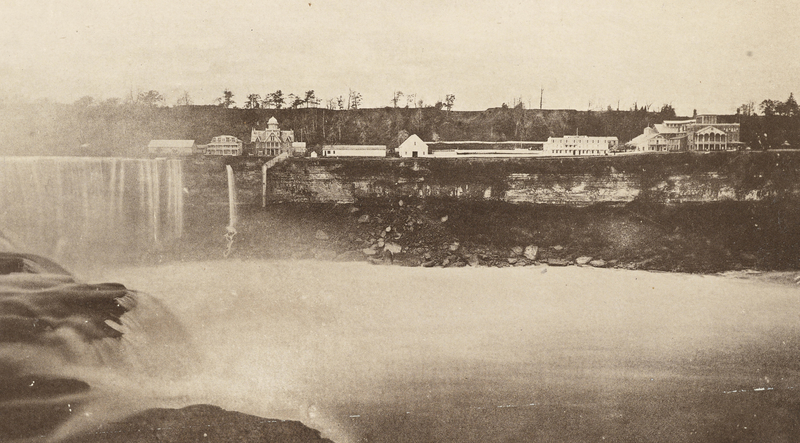
Already, the area was shaping out to be a tourist trap, much to the dismay of those who wanted to see it retain its natural beauty and allure.
There may have been those that stood firm in their position about leaving the falls alone in its natural beauty and wonder, as many argued that man shouldn’t try and manipulate nature in such a way. On the other hand, scientists had proven that erosion was a very real danger to the area, and that even if engineers didn’t intervene, it would likely crumble to a point of devastation.
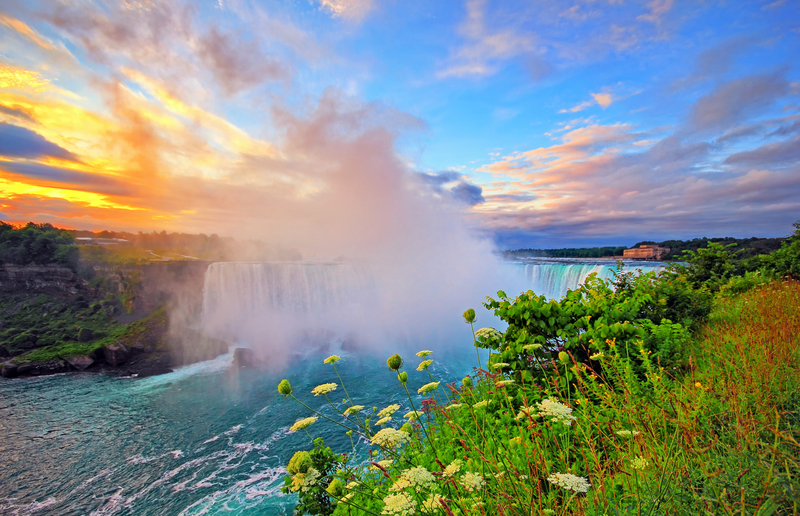
They knew that the time was coming once again, and that they would have to spring into action, one way or another.
The International Joint Commission had to work with both Canada and the United States to come up with a solution that could make everyone happy – or at least, appear to make everyone happy, that is.
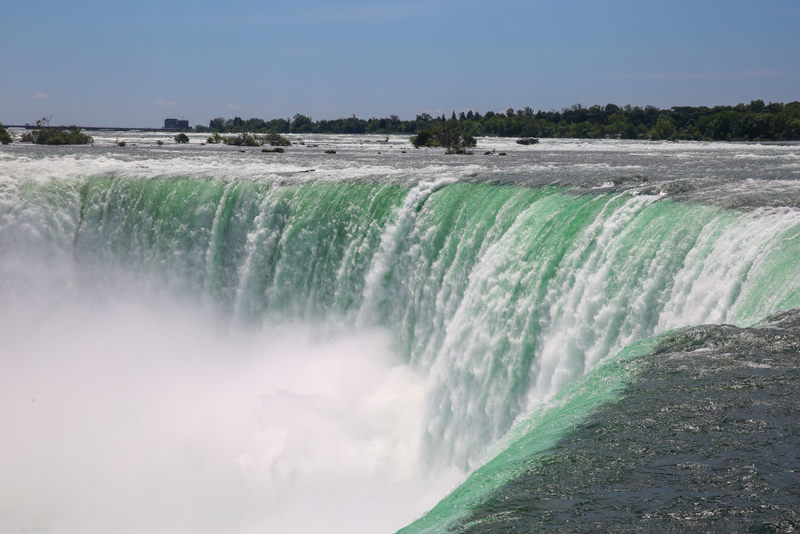
Officials wanted to keep up appearances in that everything was still flowing regularly through the falls. But they also wanted to keep using the area for their money-making industrial endeavors. So, what exactly was the solution that they settled on?
In the end, the IJC did authorize the work to be done, but there are multiple stipulations to keep things from getting out of hand. One of the main concerns of everyone involved in making the decisions was to make it appear as though none of the water had been diverted – whilst actually diverting some of the water to use for industrial purposes.
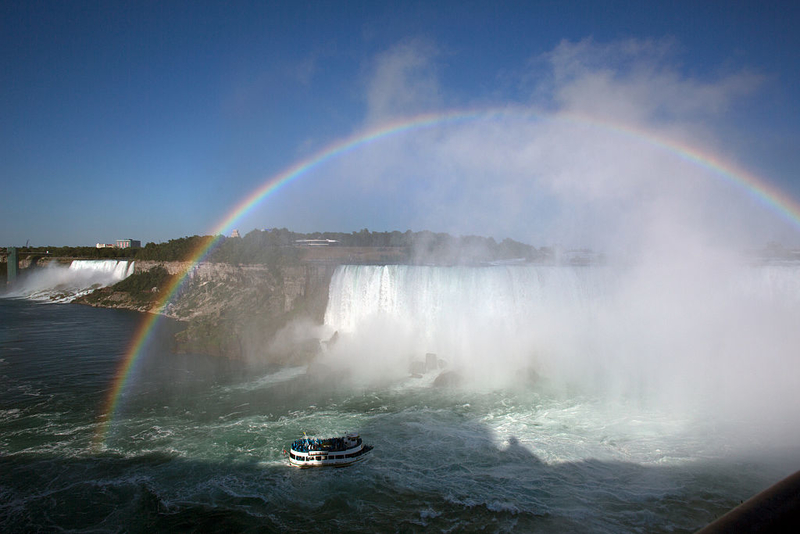
Engineers had to get creative in solving this particular problem. Luckily, a combination of brilliant (and well paid) individuals were able to solve the issue in a way that pleased all of the parties that were involved.
As odd as a request as it may have been to divert the falls without being too noticeable – engineers were able to make it happen. None of the thousands of people to visit Niagara Falls each day would hardly know that several decades ago, there was even more water passing over the rushing falls. Especially not the tourists who choose to take the boat ride right up close to the base of the towering formation.
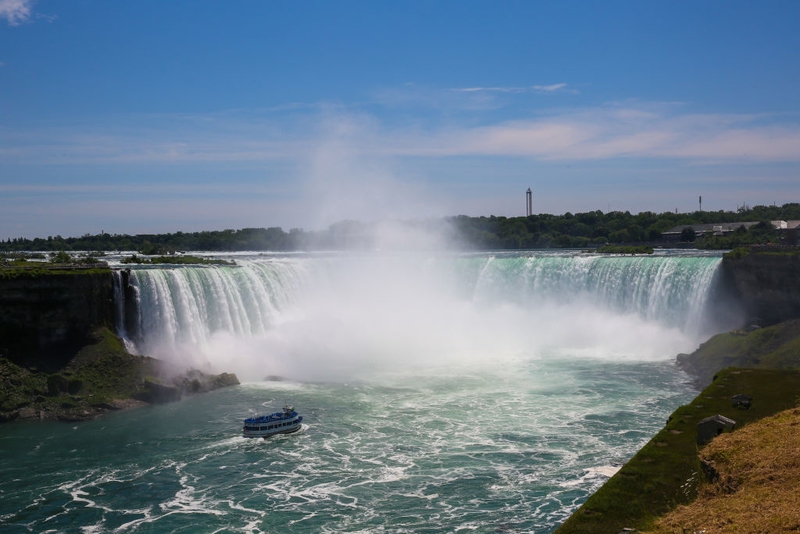
Visitors climb aboard one of a few ships and venture into the mist. Most of them choose to wear the raincoats that are provided – and likely still end up wet!
Over any given year, there can be tens of millions of people to head out to the Niagara Falls area. Whether they choose to visit the American side or the Canadian side, collectively there were over 12 million to visit in 2017 alone – and those numbers rise every year. But the year before that, numbers may have been a bit off when it was announced that once again, the American Falls would be dewatered.

The New York State Office of Parks, Recreation, and Historic Preservation revealed the plans in late 2016, although there was still a bit more time before they started the process. The locals wondered what, if any, dark secrets lay buried beneath the debris this time, now that so many years have passed by.
Although it may seem like dewatering a historic landmark may be a once in a lifetime type of deal, it’s actually happened a few times. On January 4th, 2001, a team of engineers gathers to drain the Canal Saint-Martin in Paris, France.
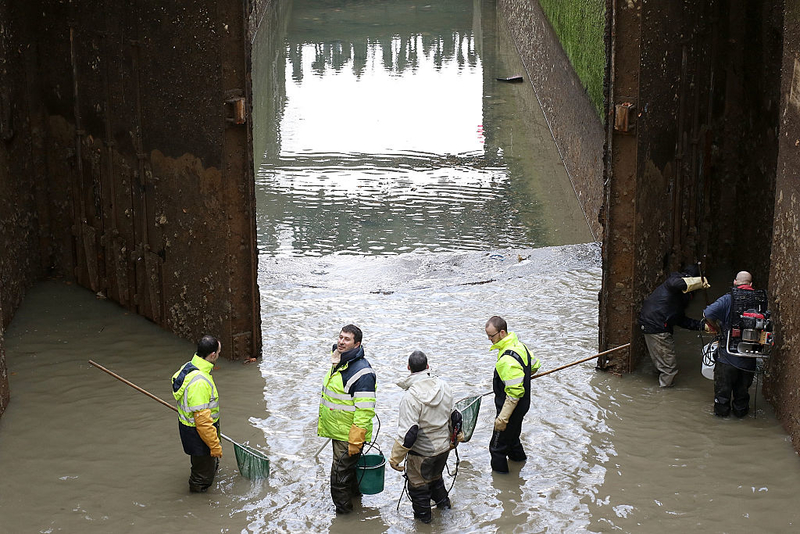
Just like in the case of the falls, locals weren’t prepared for everything they were about to discover had been hiding underneath this water for so long. After all, Parisians already have the catacombs to think about, would they be able to handle the new discoveries?
Unlike the Niagara Falls, the canal in Paris was originally formed at the hands of men, not Mother Nature. Napoleon I called for the canal’s construction in 1802, to bring the quickly growing city a source of fresh water. The idea had been raised by prefect of Paris, Gaspard de Chabrol. The prefect alerted Napoleon that the canal would not only fill city fountains, but also help them ward off diseases of the times, such as cholera.

The construction of the canals began in 1802, the same year they had been proposed, but putting them in lasted more than two decades. The intricate system uses the Canal Saint-Martin to tie together the Canal de l’Ourcq and the Seine river. Aside from helping Parisians obtain clean water and prevent the spread of disease, the system was also meant for transporting grain and other goods. But the major canal system that was so popular in the 1800’s and early 1900’s would soon find itself dwindling down.
The canal system stretches across more than 100 km (80 miles). The Canal Saint-Martin runs from the Seine river at Port de l’Arsenal. It runs through the largest man-made lake in the city, the Basin de la Villette. And finally, it ties into the Canal de l’Ourcq, which runs from La Villette to just North-East of Paris.

As the years went on, the more factories and businesses began to pop up all around the canals, eager to get their piece of the profits that flowed along their streams.
Perhaps one of the reasons constructions on the system took so long was all of the delays it faced early on. Napoleon, who ordered it to begin in the first place, fell during the 1813 Battle of the Nations, which caused rival forces to seize control of Paris in 1814.

Around the same time was the beginning of the Bourbon Restoration. Luckily, they were able to wrap everything up and get it done by 1825.
But what was once a great source of transportation of goods for Paris is used more for leisure these days. In fact, in the 1960’s, the canal was almost filled in with pavement, since traffic has all but screeched to a halt. That is, of course, with the exception of passenger boats full of wine-sipping tourists and locals alike, who flock to the area for its scenic beauty.

There are also all sorts of restaurants and shops along the canal, which makes it an even more popular area with those looking to relax and spend their money.
Locals and tourists also head to the canals for unique events that are unlike anything that can be experienced elsewhere. Take for instance the Paris-Plages, that take place every summer.

Each July, artificial sand, beach chairs and other goodies are brought in to line the sides of the canal, creating little “beaches” for everyone to enjoy. The pop-up beaches even include tiki bars and water sports!
The area as a whole has become so popular that it can be seen in multiple shows and movies that stretch across multiple decades. From Jean Vigo’s 1934 film, L’Atalante, to the more recent, Amélie, in 2001. Musicians like the Courteneers have also written about it within their songs.

Artist Alfred Sisley has painted it in a few of his works, including his 1870 painting, View of the Canal Saint-Martin. If lawmakers succeed in their wishes to clean up the canals, it is possible we may see it in more productions in the future, as well.
Much unlike the Niagara Falls, the canal in Paris is actually drained on a somewhat regular basis. City officials decided to properly drain the canals every 10-15 years. After all, with it being in such a populated area, it is bound to become filled with debris that blocks the proper flow.
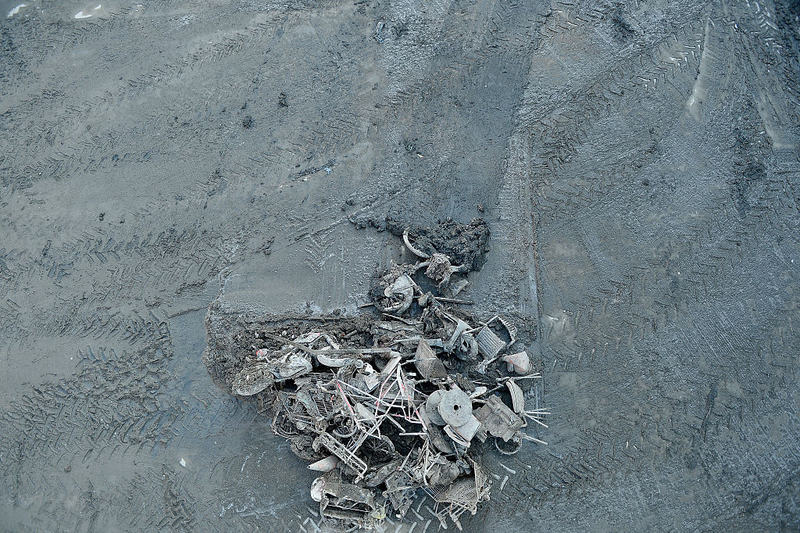
In fact, when they last drained it in 2001, they pulled out more than 40 tons of garbage – that’s over 80,000 pounds of trash! But it wasn’t just your typical cups and bottles and old furniture, etc. Authorities found some pretty questionable stuff during the operation.
Of course, even though they were bound to find a lot of trash that had been dumped over the past decade or so, they were also expecting to find some less…common stuff, too. So, what did the authorities uncover at the bottom of the Canal Saint-Martin?

Well, this time alone, they found more than 100 bicycles, as well as some motor scooters, a sewing mannequin and some World War I shot gun shells. Even more disturbing perhaps, they found a wheelchair, which was hopefully empty when it went into the water.
Officials knew that draining the canals wouldn’t be an easy process. Luckily, engineers were able to come up with an effective method that has worked well for the city for several decades.
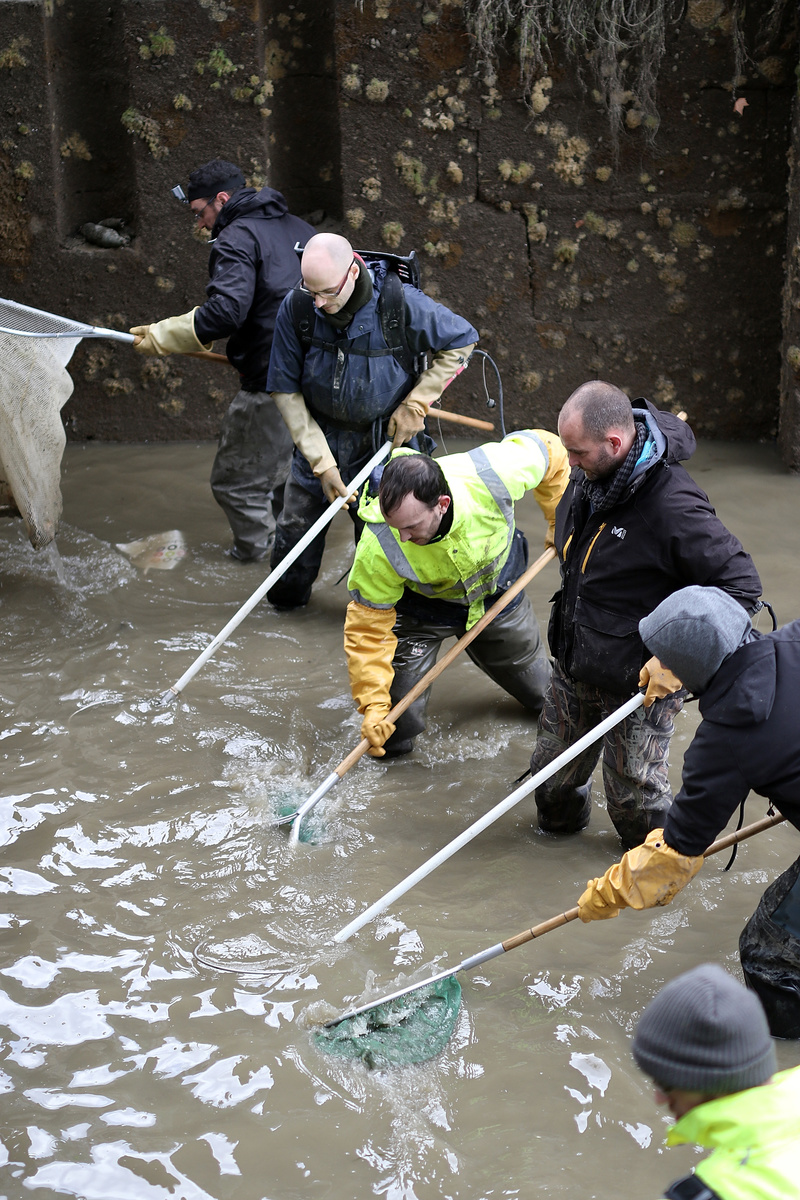
To make everything easier and to first prepare, they set up a dam. Doing this would help with their next step: diverting over three million tons of water into the Seine.
Draining the canal is not easy, either – or cheap. In fact, even though it has to be done every fifteen years or so, that doesn’t mean it happens overnight.
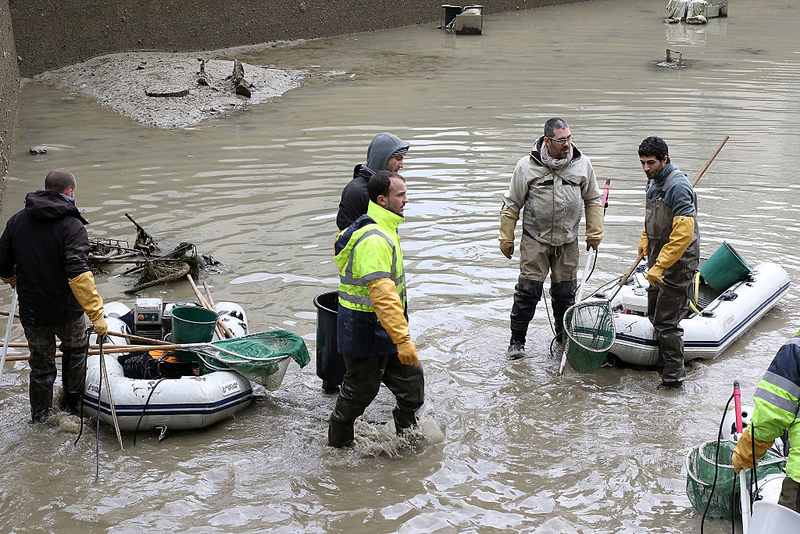
From start to finish, getting everything done, including draining it and cleaning out the junk and debris, it can take several months. Not to mention the many labor hours it takes to do everything, and that isn’t taking into consideration the costs, which can run upward of $10 million.
The actual dewatering began on the 4th day of January, and took several days to even clear enough of the liquid out to begin the next phase. Then, by the 7th, they were ready to begin sifting through all of the unburied trash…and treasure.
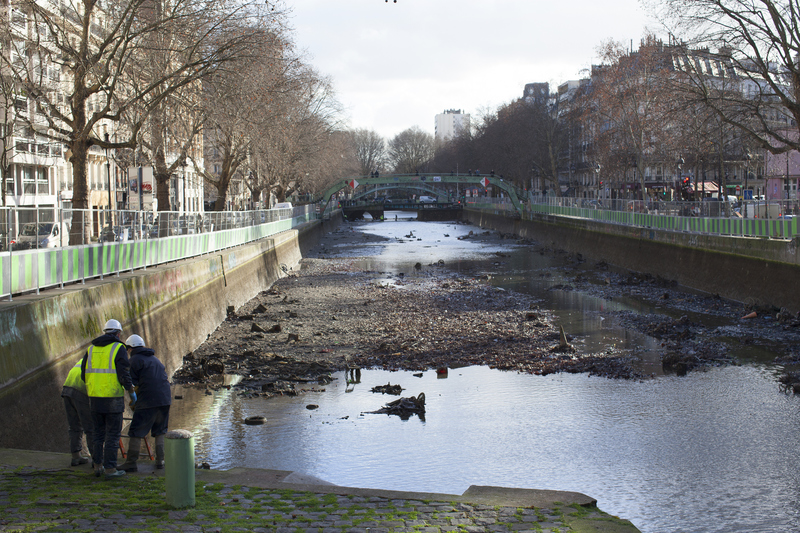
In such a crowded city, you can imagine all of the garbage that finds its way to the canal. The people of Paris were shocked by what they were seeing.
Once the water receded, officials were left looking at the heaps of garbage in the empty canal. The revelation gave them a greater perspective as to how much trash gets dumped in the water in Paris.
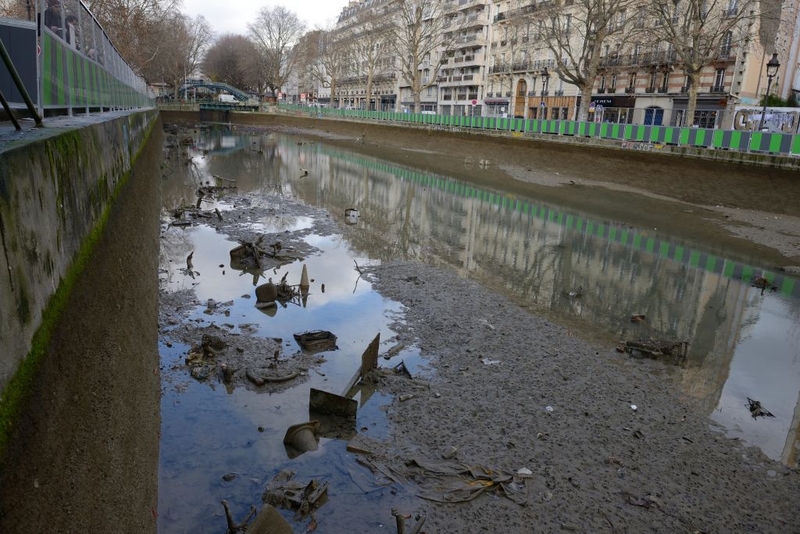
But perhaps even odder than all of the garbage they found was the random treasure-like objects. At least they were treasures, considering how strange it was to see these things tossed aside.
Some of the most interesting things that were found throughout the endeavor were over 100 bicycles – from the Vélib’ rental system. One resident named Marc told The Guardian, “I just can’t believe the quantity that are in there. I guess they were stolen and thrown in afterwards.”

That does seem like a plausible explanation in Paris, where nearly 1,400 bikes go missing every single day, according to The Local. With almost 800,000 of the things disappearing yearly, it’s no wonder they found so many heaps of them hiding in the canal.
Although, considering that the bike company has only existed since 2007, the numbers are definitely high. Another resident told the publication that “bobos,” which is what the locals call all of the young, new people flooding into the city, are responsible for the trash.
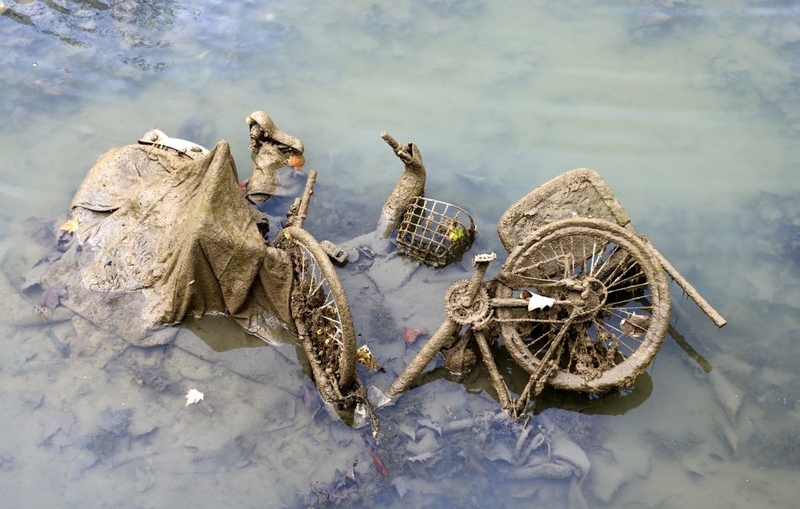
“That’s Paris for you, it’s filthy,” said one man. “I don’t remember there being that much rubbish in there. Bobos are using it as a dustbin.” And speaking of the bobos, they all lined the bridges, along with the locals, to see what else was going to be removed from the canal.
Bicycles aren’t the only form of transportation that authorities recovered. Although they didn’t find nearly as many, they did find a couple of motor scooters beneath the murky water as well. It’s kind of shocking that there were only two found, while they found so many bikes.

Even if they were stolen – especially if they were stolen – you’d think the thieves would have sold them for more money, not just dumped them in the river.
Aside from the piles of interesting treasures that were pulled from the canal, there were some less than desirable items that were found, too. Take this janky old chair they pulled out of the water, for instance.
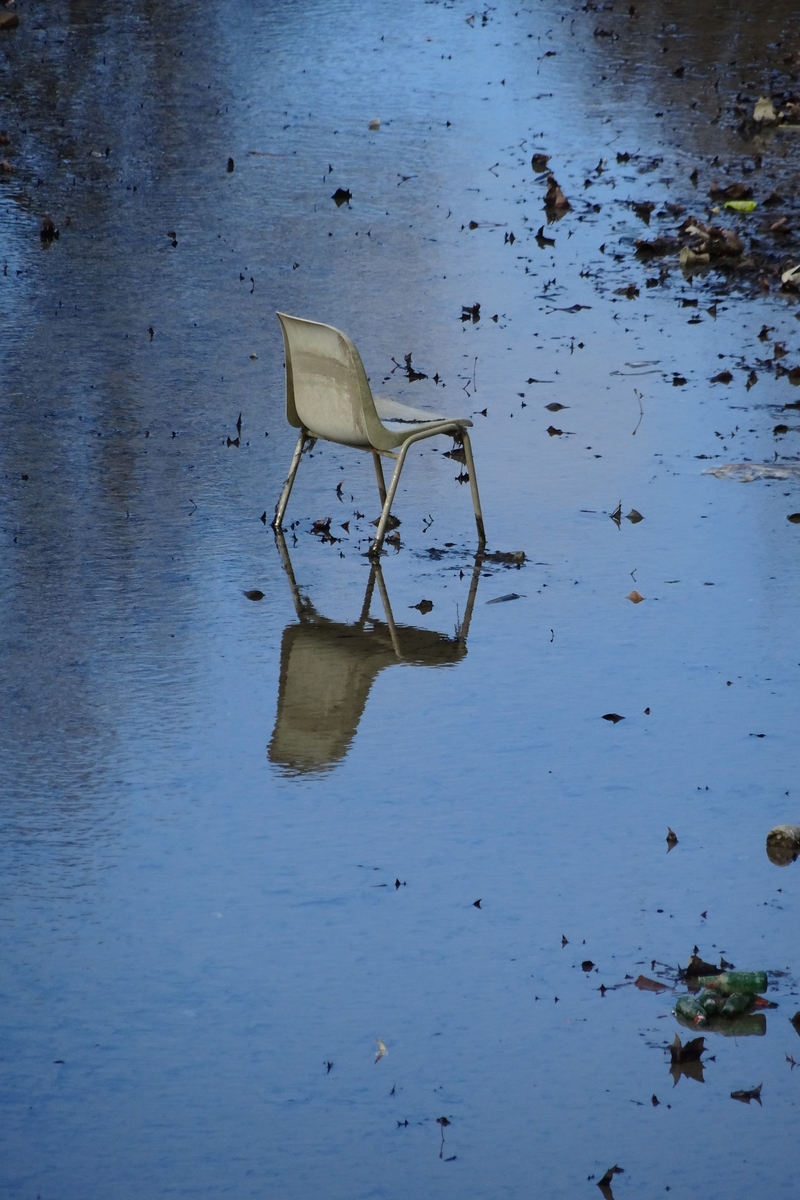
Again, one wonders how this chair could have possibly ended up down there! Someone would have had to go through the trouble of dragging it out of their home and tossing it. But why?
To reveal the garbage, workers dumped over 23,000,000 gallons in the river Seine. Then, people gathered in the streets and observed as the water was slowly drained from the canal. When it got down to just less than two feet, the fish were removed and relocated, and then the disposal process began.

Onlookers were left with mouths wide open when they saw the 45 tons of garbage looking up at them from beneath the murk.
And, while some locals who respect their city and its water may be unhappy about the way others treat the canal, they are anything but surprised. Deputy mayor of Paris, Celia Blauel reported that if everyone would just refrain from dumping, “we might be able to swim in the canal in a few years.”

There is still a long way to go before that dream can be made into a reality, but she’s keeping her eyes on the prize. The entire process took just over three months to complete, and everyone is hoping that the next time it needs to be done, it won’t be as filthy,

Even More Things Baby Boomers Think Are Cool

More Hilarious Airport Pick-Up Signs You Must See

Trail Cams Photos That Capture Real Wild Life Photos Part 2

Natural Remedies to Keep Fleas Away From Your Pet

Does Your Dog Need a Calcium Supplement?

More of The Most Embarrassing Red Carpet Moments That Will Make You Cringe

The Dark Side You Never Knew About The Wizard of Oz

More 50s-70s Teen Idols Who Are Not All Fame and Fortune

Immeasurable Love: Celebrity Couple Height Differences You Never Noticed Before
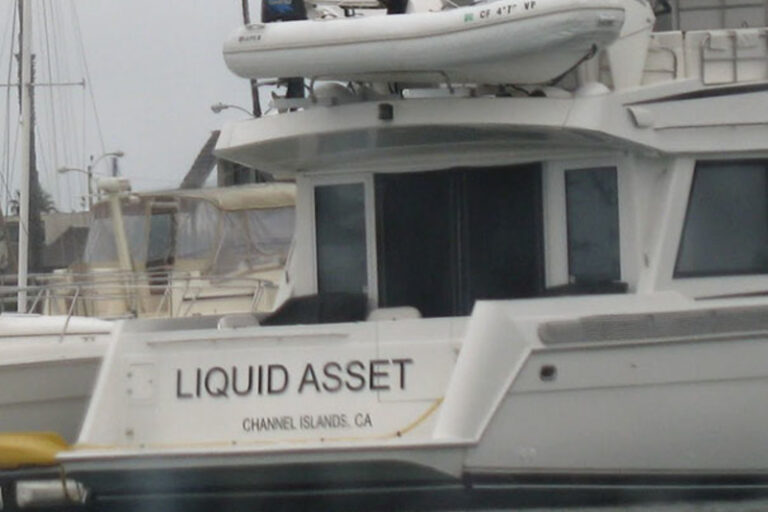
More Boat Names That Will Leave You Laughing










